Accepted Scientific Name: Mammillaria fraileana (Britton & Rose) Backeb.
Blätt. Kakteenf. 1934(4): [6] genus 131, sp. 2 (fig.). as Mamillaria
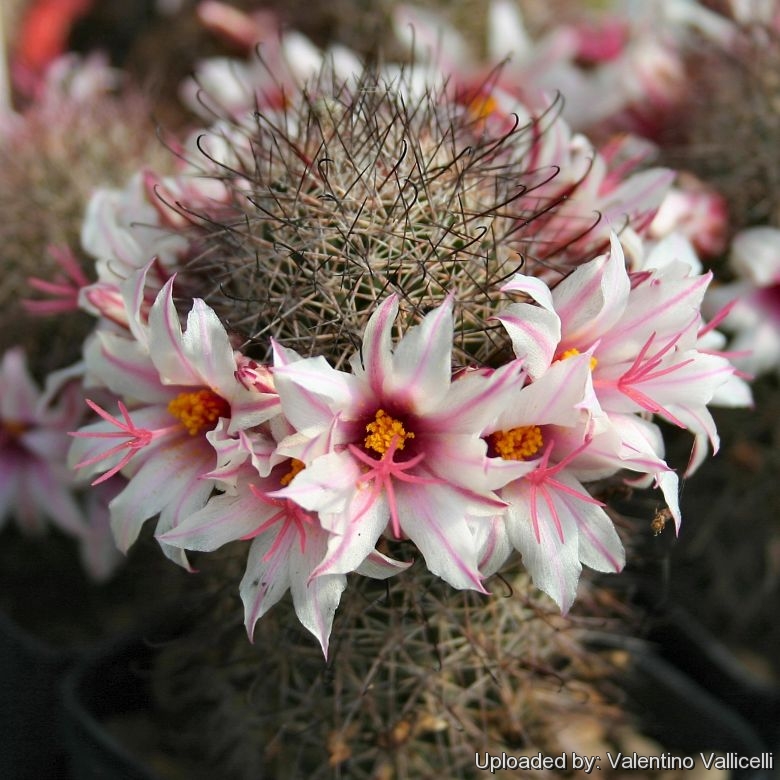
Ebnerella fraileana (Mammillaria fraileana) Photo by: Valentino Vallicelli
SB1247 Pichilingue BCS. Slowly offsetting, thin upright dark green stems, 3-4 cm in diameter, up to 15 cm tall.
Origin and Habitat: Mexico, state of Baja California (on the Coast of Gulf of California, near La Paz, Cabo san Lucas, Todos santos)
Habitat: It grows on non calcareous arid granite-based soils and rocky hillsides, in desert scrub (Lower Sonoran Zone) and is quite abundant where it occurs, but tends to be scarce on the mainland. The habitat of Mammillaria fraileanaSN|5356]]SN|5356]] is home to succulent flora and is particularly rich in local endemics such as: Mammillaria albicansSN|5451]]SN|5348]], Mammillaria poselgeriSN|23754]]SN|9652]], Mammillaria cerralboaSN|5415]]SN|5382]], Mammillaria capensisSN|9033]]SN|9033]], Mammillaria hutchisonianaSN|5382]]SN|5415]] v. bullardiana, Mammillaria evermannianaSN|9652]]SN|23754]], Mammillaria schumanniiSN|5348]]SN|5451]], Ferocactus townsendianusSN|16050]]SN|11991]], Ferocactus diguetiiSN|11991]]SN|16050]], Echinocereus ferreirianusSN|8681]]SN|21825]], Echinocereus barthelowanusSN|7505]]SN|21867]], Echinocereus brandegeeiSN|21867]]SN|7505]], Echinocereus sciurusSN|21825]]SN|8681]], Opuntia tapona, Opuntia chollaSN|10979]]SN|10979]], Opuntia bravoae, Peniocereus johnstoniiSN|8193]]SN|8193]], Lophocereus schottiiSN|8344]]SN|8344]], Machaerocereus gummosusSN|8115]]SN|8115]], Stenocereus thurberiSN|8265]]SN|8265]], Pachycereus pringleiSN|8572]]SN|8572]], Yucca valida and Ibervillea sonoraeSN|21231]]SN|21231]] var. peninsulae. There are no known major threats for Mammillaria fraileanaSN|5356]]SN|5356]].
Synonyms:
Description: Slowly offsetting, irregularly forming small clusters.
Stem: Cylindrical, narrow, eventually clumping near the base of the plant, without latex, 3-4 cm in diameter, 15 cm tall. Body is green, but often reddish if grown in full light.
Tubercles: Pyramidal without latex, axil naked (or with a few bristles)
Roots: Fibrous or moderately swollen.
Radial spines: 11 to 12, 8 to 10 mm long, thin and white.
Central spines: 3 to 4, 10 mm long, dark brown, with one central spine, hooked.
Flowers: Light pink flower, petals with darker pink median line, 2,5-3 cm in diameter, stigma bright carmine-pink. (A form with greenish-yellow stigma lobes is also known as "yellow form").
Fruits: Red, clavate and long lasting on the plant.
Seeds: Black.
Blooming season: From May to September.
Bibliography: Major references and further lectures
1) Edward Anderson “The Cactus family” Timber Press, Incorporated, 2001
2) James Cullen, Sabina G. Knees, H. Suzanne Cubey "The European Garden Flora Flowering Plants: A Manual for the Identification of Plants Cultivated in Europe, Both Out-of-Doors and Under Glass" Cambridge University Press, 11/Aug/2011
2) David R Hunt; Nigel P Taylor; Graham Charles; International Cactaceae Systematics Group. "The New Cactus Lexicon" dh books, 2006
3) John Pilbeam “Mammillaria: the cactus file handbook” Cirio Publishing Services Ltd Dec/30,/1999
4) León de la Luz, J.L., Hernández, H.M. & Gómez-Hinostrosa, C. 2013. Mammillaria albicans. In: IUCN 2013. "IUCN Red List of Threatened Species." Version 2013.2. <www.iucnredlist.org>. Downloaded on 03 January 2014.
5) Forrest Shreve, Ira Loren Wiggins "Vegetation and Flora of the Sonoran Desert" Volume 1 Stanford University Press, 1964
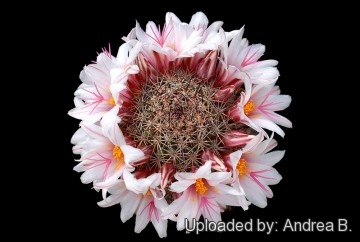 Ebnerella fraileana (Mammillaria fraileana) Photo by: Andrea B.
Ebnerella fraileana (Mammillaria fraileana) Photo by: Andrea B.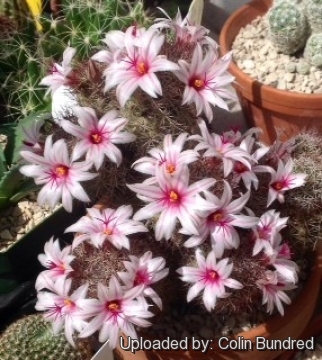 A ten year old clustering in Colin's collection. (Mammillaria fraileana) Photo by: Colin Bundred
A ten year old clustering in Colin's collection. (Mammillaria fraileana) Photo by: Colin Bundred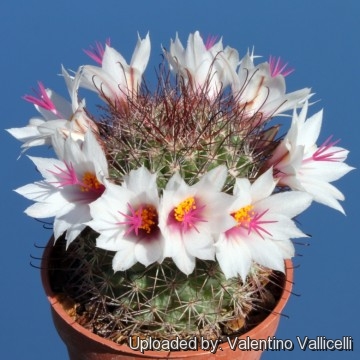 Ebnerella fraileana (Mammillaria fraileana) Photo by: Valentino Vallicelli
Ebnerella fraileana (Mammillaria fraileana) Photo by: Valentino Vallicelli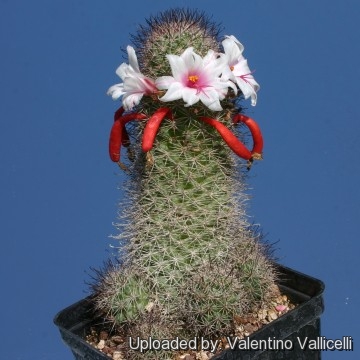 Ebnerella fraileana (Mammillaria fraileana) Photo by: Valentino Vallicelli
Ebnerella fraileana (Mammillaria fraileana) Photo by: Valentino Vallicelli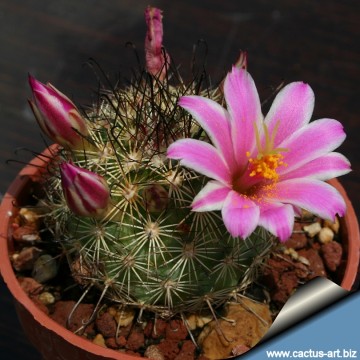 Ebnerella fraileana (Mammillaria fraileana) Photo by: Cactus Art
Ebnerella fraileana (Mammillaria fraileana) Photo by: Cactus Art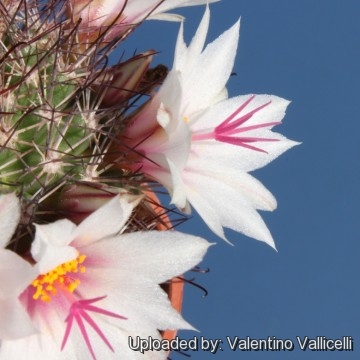 Ebnerella fraileana (Mammillaria fraileana) Photo by: Valentino Vallicelli
Ebnerella fraileana (Mammillaria fraileana) Photo by: Valentino Vallicelli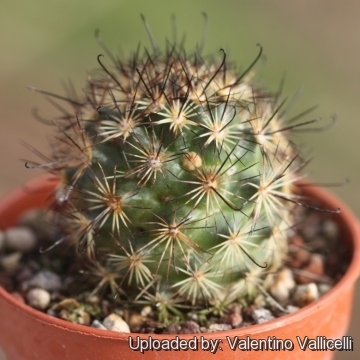 Mammillaria fraileana La Paz (Mammillaria fraileana) Photo by: Valentino Vallicelli
Mammillaria fraileana La Paz (Mammillaria fraileana) Photo by: Valentino Vallicelli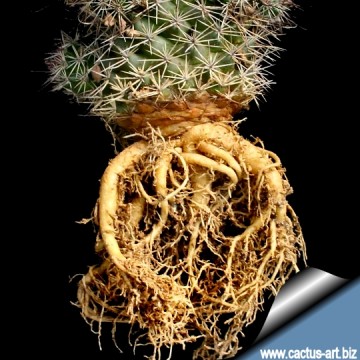 Ebnerella fraileana (Mammillaria fraileana) Photo by: Cactus Art
Ebnerella fraileana (Mammillaria fraileana) Photo by: Cactus ArtCultivation and Propagation: This plant isn't famous for being easy to cultivate, but in good conditions with excellent ventilation, it grows without difficulty. It is especially sensitive to over-watering. So careful watering and an open mineral potting soil are a must. Avoid the use of peat or other humus sources in the potting mixture.
Don't add limestone to the potting mix, which must be moderately acidic. Can be sensitive to frost (but some populations are resistant to -10° C). Requires maximum sun exposure to reach its full potential. and in order to achieve success in flowering.
A winter rest that allows the plant to shrivel (perhaps losing up to 25% of its summer height) will encourage flowering and long term survival. Be careful to encourage slow growth.
Propagation:: Seeds or offsets.
Your Photos
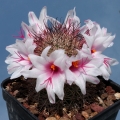
by Valentino Vallicelli
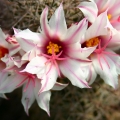
by Valentino Vallicelli
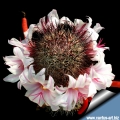
by Cactus Art
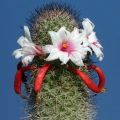
by Valentino Vallicelli
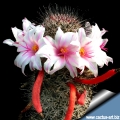
by Cactus Art























